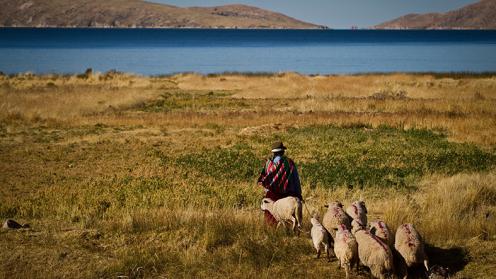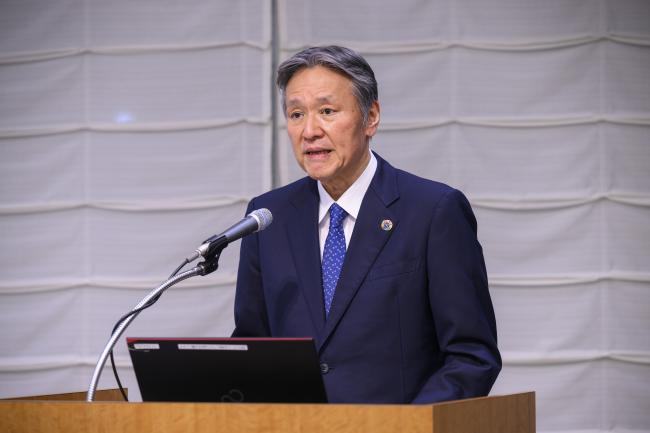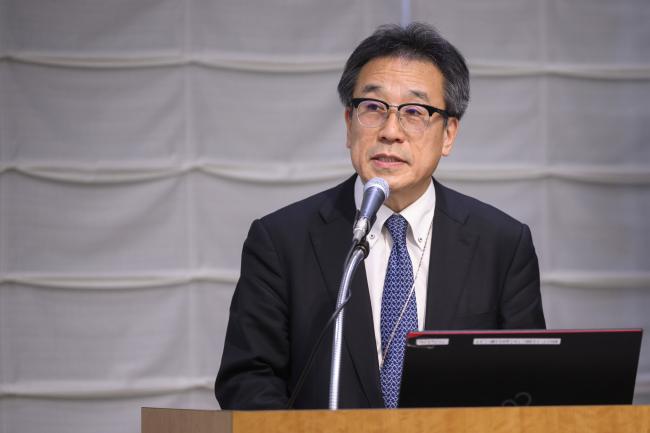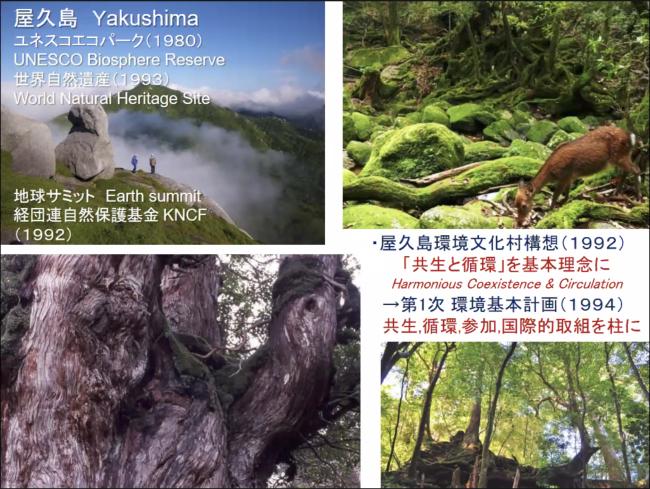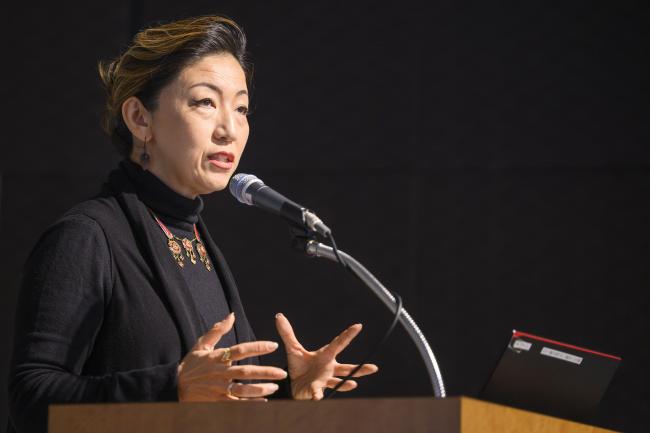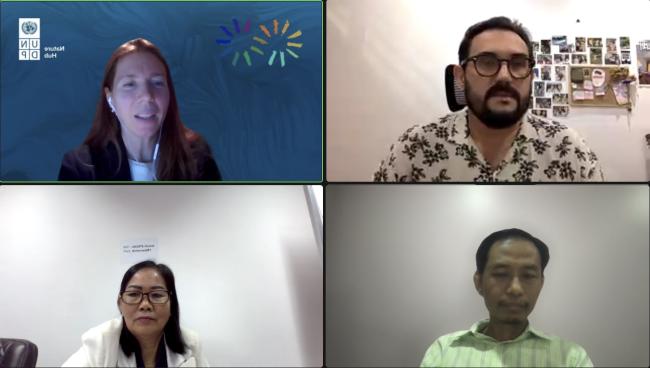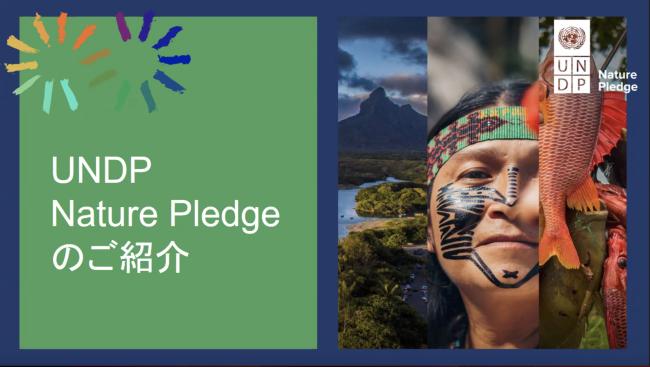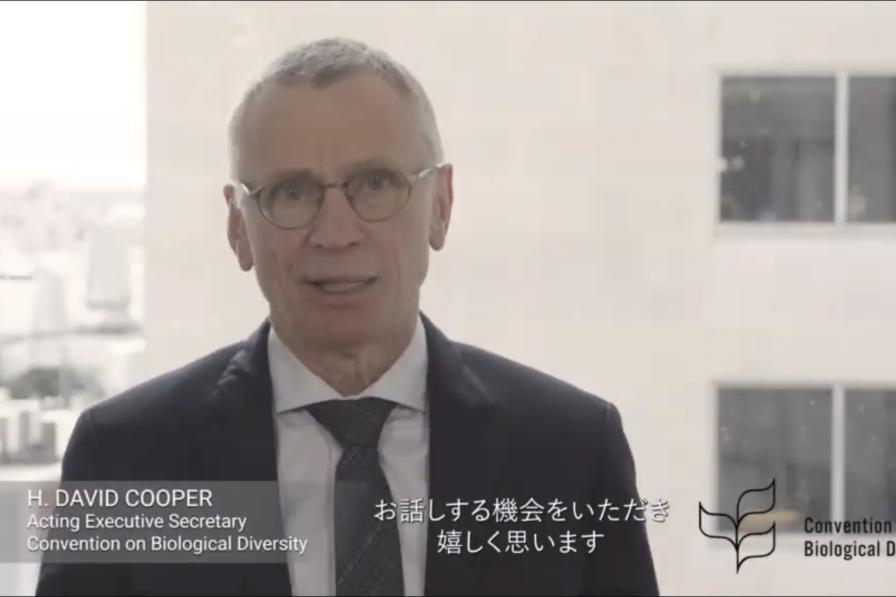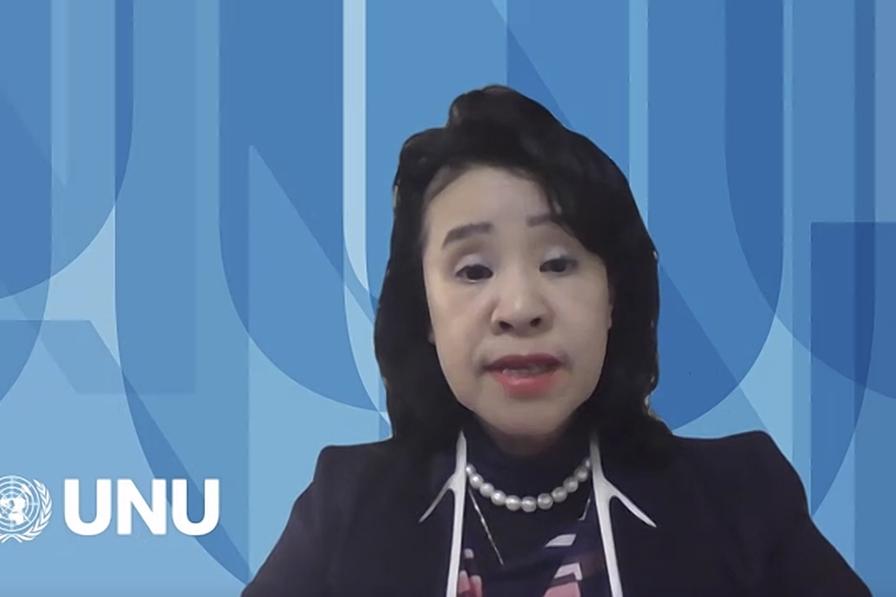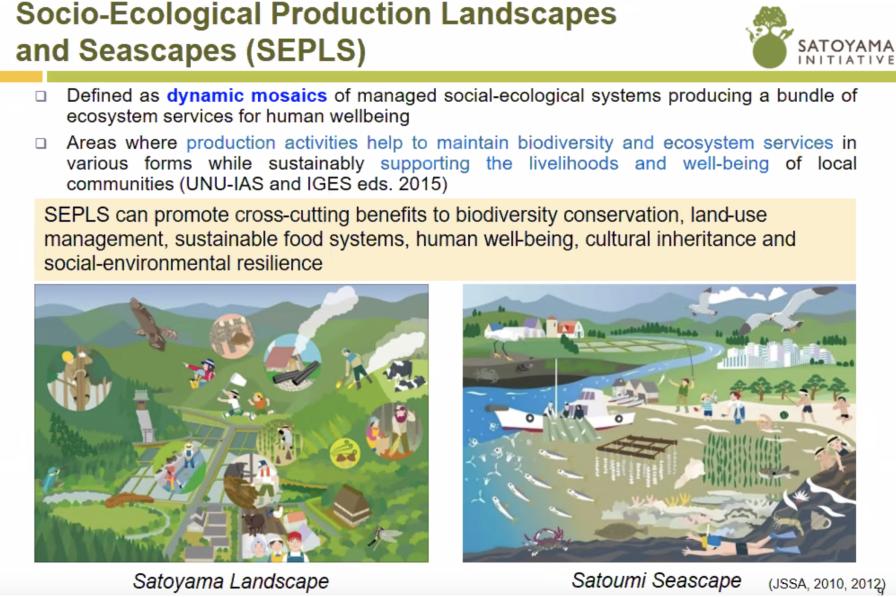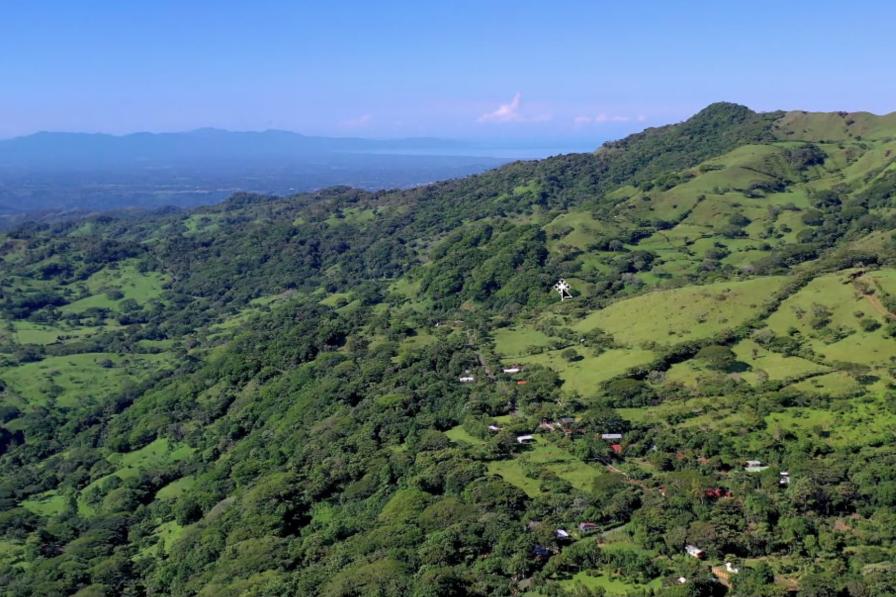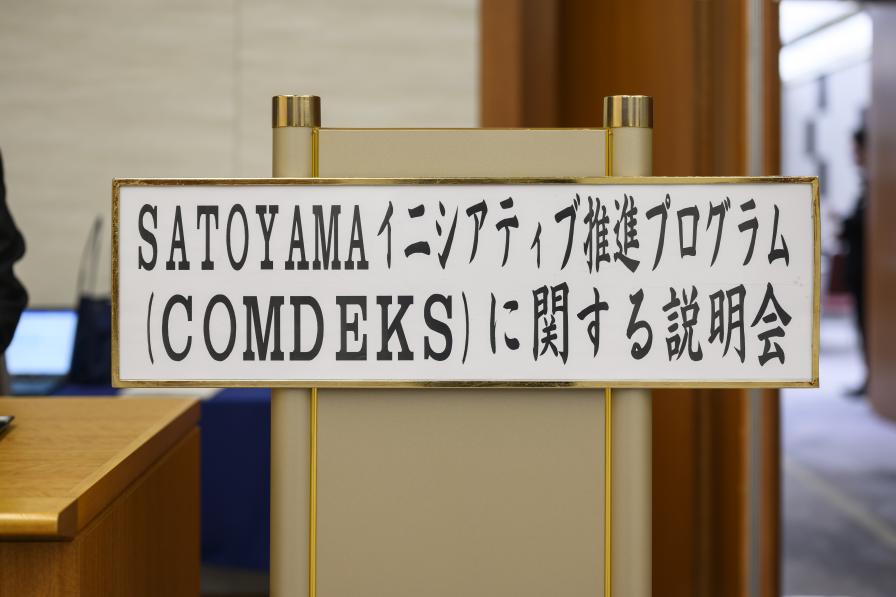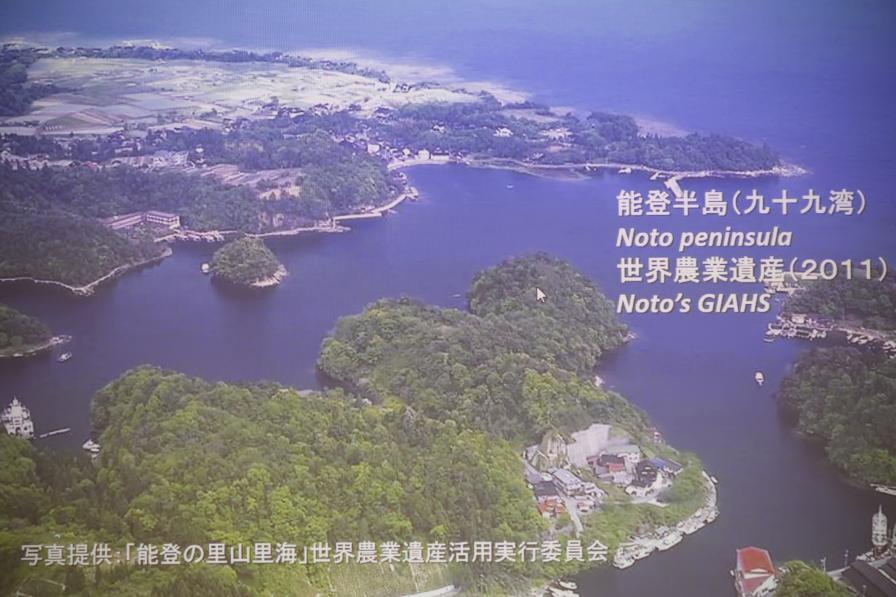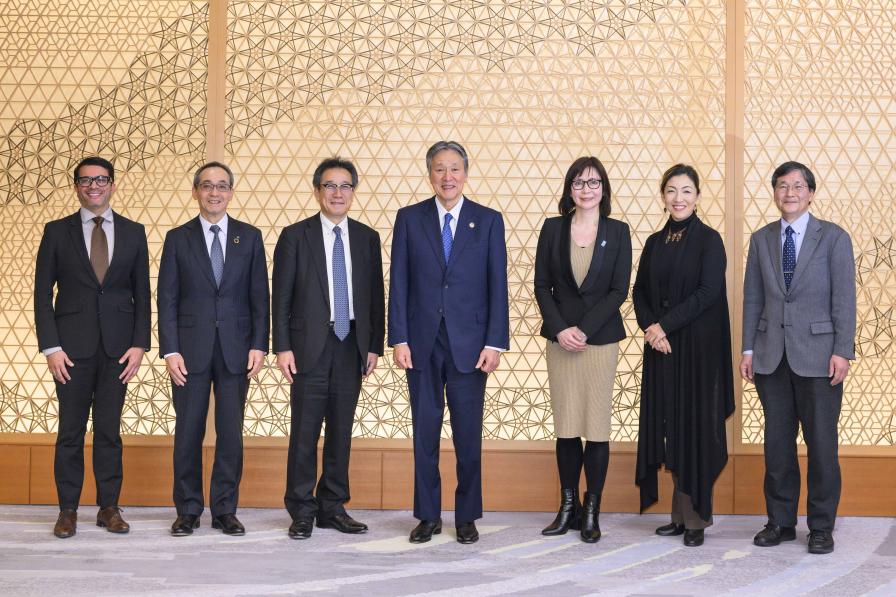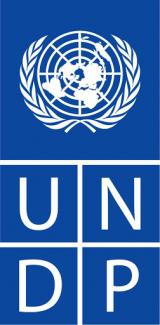About
As the COMDEKS programme enters its fourth phase in supporting local communities to both develop and live in harmony with nature, it is sharing best practices illustrating the programme's success and its outlook on the future.
The Keidanren Committee on Nature Conservation (KCNC) and the Ministry of the Environment of Japan (MOEJ) co-hosted the in-person and virtual event in collaboration with the Global Environment Facility (GEF) Small Grants Programme (SGP) of the UN Development Programme (UNDP) and the UN University Institute for the Advanced Study of Sustainability (UNU-IAS).
Key messages:
- Launched in 2011 as a flagship programme of the Satoyama Initiative, COMDEKS aims to drive local action for the conservation and sustainable use of biodiversity while supporting livelihoods and well-being in Socio-Ecological Production Landscapes and Seascapes (SEPLS).
- Phase 4 of COMDEKS will contribute to the implementation of the Kunming-Montreal Global Biodiversity Framework (GBF), including Target 2 on restoration of at least 30% of degraded lands, Target 3 on the “30 by 30” goals to expand conservation of biodiversity in 30% of the landscapes and seascapes globally, and Target 10 on sustainable use of biodiversity in agriculture, aquaculture, fisheries, and forestry.
- The event presented first-hand insights from COMDEKS case studies in Cambodia and Costa Rica. It illustrated how economic diversification can create synergies with the restoration of landscapes and enhancement of biodiversity.
Event summary:
Chiho Okuda, UNDP, moderated the event. Many speakers expressed their sympathy with and support for the victims of the devastating earthquake on the Noto Peninsula on 1 January 2024.
Keiji Nishizawa, Chairman, KCNC, delivered opening remarks. He reminded participants of the global state of the environment and the need to provide financial support for the transition to more sustainable socio-economic systems. He praised the early commitment by 320 organisations, including 80 Japanese businesses, to start reporting against the recommendations of the Taskforce on Nature-related Financial Disclosures (TNFD). He encouraged KCNC members to continue playing a leadership role.
Yutaka Matsuzawa, Vice-Minister for Global Environmental Affairs, MOEJ, in his opening remarks, reflected on the success of the Satoyama Initiative and COMDEKS since the tenth Conference of the Parties (COP) to the Convention on Biological Biodiversity (CBD) in 2010, which took place in Nagoya, Japan. He assured participants of the Government of Japan’s unwavering support for COMDEKS, and noted the important role the programme plays in implementing the GBF.
Tsunao Watanabe, Director, International Partnership for the Satoyama Initiative (IPSI), delivered the keynote speech. He highlighted the declaration of Yakushima Island as Japan’s first World Heritage Site in 1993 after a meaningful dialogue with local communities living in harmony with nature. He said this example has influenced developments under the CBD, including the adoption of the Aichi Targets and the launch of IPSI at CBD COP 10 in 2010.
Watanabe reported that IPSI membership has grown from 51 to 314 members since 2010, and reflected on the success of the COMDEKS programme with over 400 community-based projects in 20 developing countries. He reminded participants that the vision of living in harmony with nature requires fast and transformative change to reverse ecosystem degradation and unsustainable consumption. He highlighted the most relevant GBF targets to which COMDEKS could contribute under a whole-of-society landscape approach: Target 1 (integrated spatial planning), Target 2 (ecosystem restoration), Target 3 (protected areas and other effective area-based conservation measures, or OECMs), and Target 10 (sustainable management of areas under agriculture, aquaculture, fisheries, and forestry).
Akiko Yamamoto, UNDP, described UNDP’s engagement in COMDEKS, explaining the inherent links between socio-economic development and environmental protection. She stressed that investing in the “world’s natural healing powers” makes economic sense, and warned we will pass planetary tipping points without urgent action. Yamamoto presented the UNDP Nature Pledge which puts nature at the heart of development to provide a planetary safety net for all of humanity. To achieve this, UNDP calls for shifts in values, economics, finance, policy, and practice.
Diana Salvemini, UNDP, summarized Phase 4 of COMDEKS, which is funded by MOEJ and KCNC, contributing a total of ¥ 1 billion (about USD 6.7 million) until 2027. She said the programme will support implementation of National Biodiversity Strategies and Action Plans (NBSAPs), focusing on GBF Targets 2, 3, and 10 as well as SEPLS. She pointed to multi-stakeholder participation as an essential aspect. A video provided further illustration and insights on COMDEKS.
A panel discussion then gave first-hand insights into COMDEKS case studies from Cambodia and Costa Rica.
Carlos Espinosa, technical consultant on OECMs and SEPLS in Costa Rica, presented on the landscape approach to ecosystem restoration in the Jesus Maria River Basin. He explained how: traditional livestock practices were improved based on scientific evidence, restoring degraded soil and water bodies; co-cultivation of coffee, avocado, and other fruit trees led to both economic diversification and enriched biodiversity; and innovation such as working with native bees and mobile bee hives sustainably enhanced economic yield.
Navirak Ngin, SGP, and Socheath Sou, Executive Director, Live and Learn Cambodia, presented their experience with COMDEKS in the Stung Siem Reap watershed. They illustrated how a whole-of-society landscape management approach led to more sustainable fishing, forestry, agriculture, and tourism practices, with benefits being shared across communities.
Event conclusions:
David Cooper, Acting Executive Secretary, CBD Secretariat, in a video message, congratulated the COMDEKS partners on the launch of Phase 4 and emphasized the whole-of-government and whole-of-society approach inherent in the GBF. He lauded the Satoyama Initiative as an ideal framework for collaboration between stakeholders and the implementation of best practice projects under national NBSAPs.
Shinobu Yamaguchi, Director, UNU-IAS, stressed that COMDEKS can make a lasting impact on biodiversity by contributing to nearly all of the 23 GBF targets. She highlighted the important part Indigenous Peoples and local communities play in biodiversity and spatial planning, and said COMDEKS projects can serve as models for OECMs.
Hideko Hadzialic, Director, UNDP Japan Representation Office, closed the event with thanks to the co-organizers and an urgent call to accelerate efforts in the face of multiple global crises.
The Earth Negotiations Bulletin writer for this meeting is Kaspar Sollberger, Ph.D. The Digital Editor is Natalia Mroz. The Editor is Faye Leone.
To receive free coverage of global environmental events delivered to your inbox, subscribe to the ENB Update newsletter.
All photos for this event are copyright: KCNC and UNDP.
